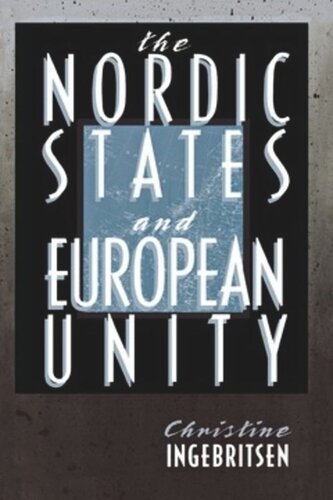

Most ebook files are in PDF format, so you can easily read them using various software such as Foxit Reader or directly on the Google Chrome browser.
Some ebook files are released by publishers in other formats such as .awz, .mobi, .epub, .fb2, etc. You may need to install specific software to read these formats on mobile/PC, such as Calibre.
Please read the tutorial at this link: https://ebookbell.com/faq
We offer FREE conversion to the popular formats you request; however, this may take some time. Therefore, right after payment, please email us, and we will try to provide the service as quickly as possible.
For some exceptional file formats or broken links (if any), please refrain from opening any disputes. Instead, email us first, and we will try to assist within a maximum of 6 hours.
EbookBell Team

5.0
20 reviewsThe idea of European unity, which the Nordic states have historically resisted, has recently become the foremost concern of Sweden, Denmark, Norway, Iceland, and Finland. Christine Ingebritsen provides a timely analysis of Nordic economic and security policies in the wake of the vast transformation of regional politics between 1985 and 1995. The Nordic States and European Unity addresses two central questions: Why did all five Nordic states trade autonomy for integration after 1985? And why do some follow the British pattern, resisting supranationalism, while others prefer the German strategy of embedding their policies in a common European project?Through extensive interviews with representatives of trade unions, government ministries, parliamentary committees, social movements, and military and industrial organizations, Ingebritsen charts adjustments to the idea of a regional system of governance. She highlights crucial differences among these nations as they seek to protect their borders against new security threats. In particular, Ingebritsen shows how the political influence of leading sectors affects each state's capacity to pursue an integrationist policy. Economic sectors are not uniformly affected by European policy coordination, and the experience of the Nordic states demonstrates this difference. Her work shifts the focus of political economics away from enduring, domestic institutions toward an understanding of institutions as sectoral and transnational.